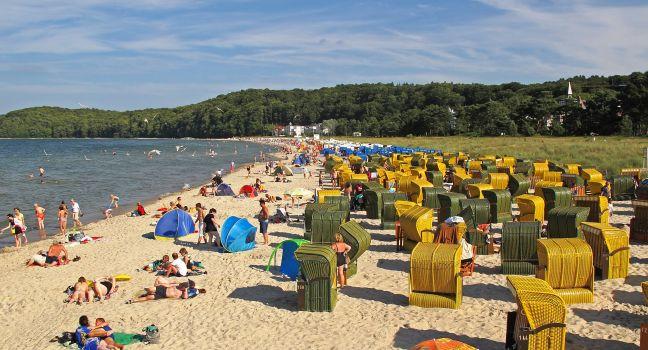Bergen
This small town is the island's administrative capital, founded as a Slavic settlement some 900 years ago. The
Get FREE email communications from Fodor's Travel, covering must-see travel destinations, expert trip planning advice, and travel inspiration to fuel your passion.
Sorry! We don't have any recommendations for Schleswig-Holstein and the Baltic Coast right now.
We’ve compiled the best of the best in Schleswig-Holstein and the Baltic Coast - browse our top choices for the top things to see or do during your stay.
This small town is the island's administrative capital, founded as a Slavic settlement some 900 years ago. The

The largest resort town on Rügen's east coast has white villas and a beach promenade. Four kilometers (2½ miles) north of Binz lies the fascist resort of Prora, where the Nazis once planned to provide vacation quarters for up to 20,000 German workers. The complex was never used, except by the East German army. Redevelopment of the site began in 2003. Luxury apartments are available for rent and there is also a youth hostel. Museums and galleries here today do their best to document the history of the site.
The rule of the Baltics' most exclusive beach is "see and be seen." The 5-km-long (3-mile-long) and 54-yard-wide beach is the perfect place to sunbathe and swim, as well as stroll—there's a 135-year-old beach path promenade. The somewhat rocky beach is punctuated by the Seebrücke, a boardwalk that extends into the sea. Amenities: food and drink; lifeguards; parking; showers; toilets; water sports. Best for: partiers; surfing; swimming; walking.
Just 5 km (3 miles) off the northwest corner of Rügen is a smaller, sticklike island called Hiddensee whose undisturbed solitude has attracted such visitors as Albert Einstein, Thomas Mann, Rainer Maria Rilke, and Sigmund Freud. As Hiddensee is an auto-free zone, leave your car in Schaprode, 21 km (13 miles) west of Bergen, and take a ferry. Reederei Hiddensee ( 038300/210 reederei-hiddensee.de) makes the 45-minute trip from Schaprode on Rügen to Vitte on Hiddensee up to twelve times a day, with other departures from Stralsund. They also serve the towns of Kloster and Neuendorf on Hiddensee. Fares start at €19.20. Vacation cottages and restaurants are on the island.
Standing on the highest point of East Rügen, 2 km (1 mile) south of Binz, is the Jagdschloss Granitz, a hunting lodge built in 1837–1846. It offers a splendid view in all directions from its lookout tower and has an excellent hunting exhibit.
From Sassnitz, it is an easy walk to the Jasmund Nationalpark, where you can explore the marshes, lush pine forests, and towering chalk cliffs.
Marking the northernmost point in eastern Germany is the lighthouse at Kap Arkona, a nature lover's paradise filled with blustery sand dunes. The redbrick lighthouse was designed by Karl Friedrich Schinkel, the Prussian court-architect responsible for so many of today's landmarks in Berlin.
This is one of the finest beaches on Rügen, and there's probably not another place like it in the world—think fine white beach bordered by a dense pine forest sitting in the shadow of the ruins of a monstrous Nazi beach resort. Prora actually sits in the Prorer Wiek, a pleasant cove with shallow water and plentiful sandbanks.
Since 1895 this narrow-gauge steam train has run across the island of Rügen connecting a number of sea resorts with each other. Trains run every two hours from Göhren to Putbus and back. From May to October the Rasender Roland runs every hour from Binz to Putbus, and beyond Putbus to Lauterbach Mole. The ride takes 75 minutes each way.
This small fishing town is the island's harbor for ferries to Sweden. Sassnitz is surrounded by some of the most pristine nature to be found along the Baltic Coast. Ten kilometers (6 miles) north of Sassnitz are the twin chalk cliffs of Rügen's main attraction, the
Tucked away on the west coast of Hiddensee is a 5-km-long (3-mile-long) beach with shimmering turquoise waters and sand so fine that you might mistake it for the Caribbean. The 50-yard-wide beach is ideal for families with children. The water is quite shallow and it's easy to walk out to the sandbanks. Vitte is divided between a nudist section to the south and a "textile" section to the north. Locals decorate the beach with baskets of flowers in summer. Amenities: showers; toilets; water sports. Best for: partiers; nudists; swimming; walking.


 Sign up for Travel Tips & News
Sign up for Travel Tips & News
 Thank you for your interest!
Thank you for your interest!